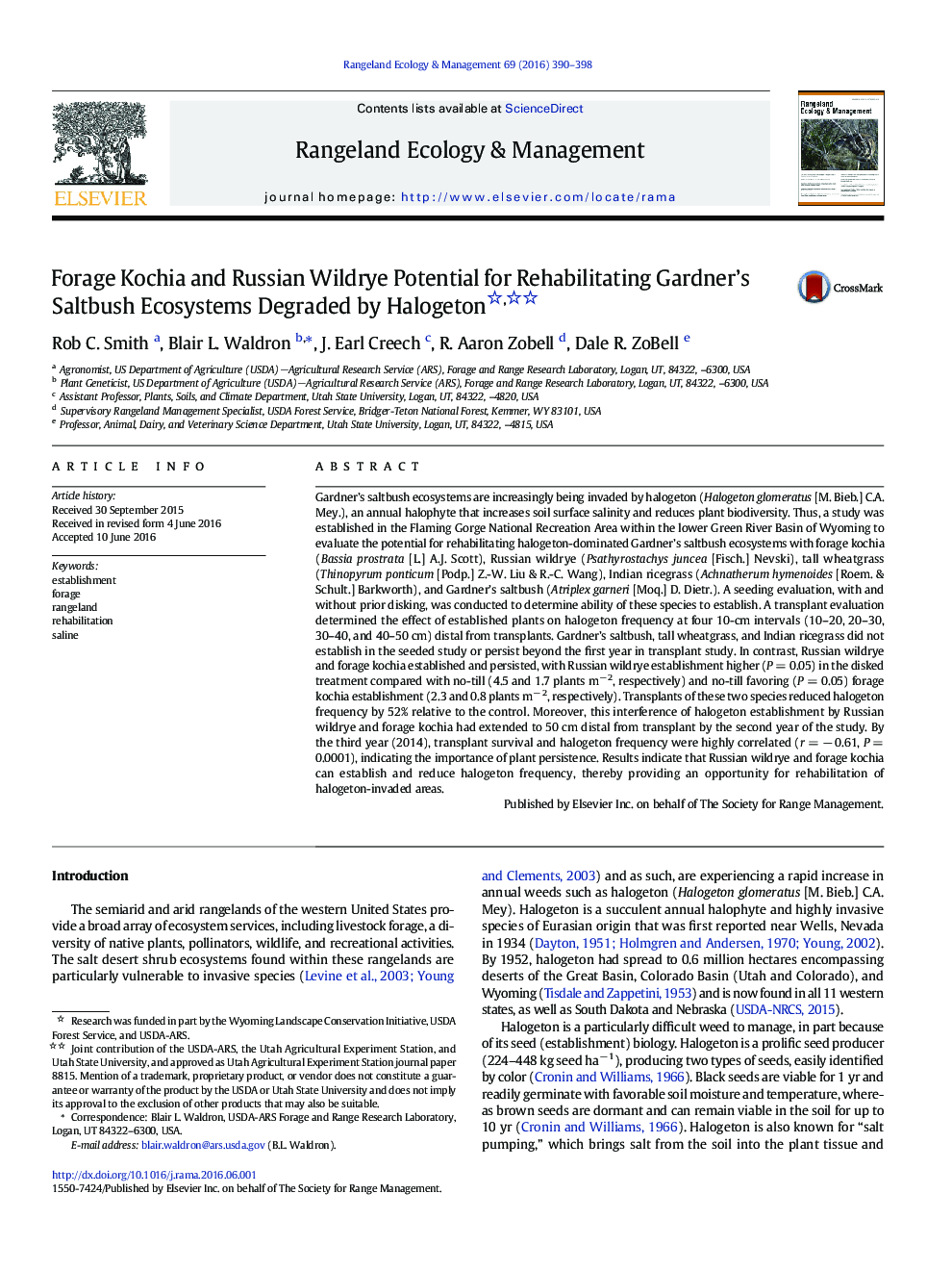| Article ID | Journal | Published Year | Pages | File Type |
|---|---|---|---|---|
| 5745318 | Rangeland Ecology & Management | 2016 | 9 Pages |
Abstract
Gardner's saltbush ecosystems are increasingly being invaded by halogeton (Halogeton glomeratus [M. Bieb.] C.A. Mey.), an annual halophyte that increases soil surface salinity and reduces plant biodiversity. Thus, a study was established in the Flaming Gorge National Recreation Area within the lower Green River Basin of Wyoming to evaluate the potential for rehabilitating halogeton-dominated Gardner's saltbush ecosystems with forage kochia (Bassia prostrata [L.] A.J. Scott), Russian wildrye (Psathyrostachys juncea [Fisch.] Nevski), tall wheatgrass (Thinopyrum ponticum [Podp.] Z.-W. Liu & R.-C. Wang), Indian ricegrass (Achnatherum hymenoides [Roem. & Schult.] Barkworth), and Gardner's saltbush (Atriplex garneri [Moq.] D. Dietr.). A seeding evaluation, with and without prior disking, was conducted to determine ability of these species to establish. A transplant evaluation determined the effect of established plants on halogeton frequency at four 10-cm intervals (10-20, 20-30, 30-40, and 40-50 cm) distal from transplants. Gardner's saltbush, tall wheatgrass, and Indian ricegrass did not establish in the seeded study or persist beyond the first year in transplant study. In contrast, Russian wildrye and forage kochia established and persisted, with Russian wildrye establishment higher (P = 0.05) in the disked treatment compared with no-till (4.5 and 1.7 plants mâ 2, respectively) and no-till favoring (P = 0.05) forage kochia establishment (2.3 and 0.8 plants mâ 2, respectively). Transplants of these two species reduced halogeton frequency by 52% relative to the control. Moreover, this interference of halogeton establishment by Russian wildrye and forage kochia had extended to 50 cm distal from transplant by the second year of the study. By the third year (2014), transplant survival and halogeton frequency were highly correlated (r = â 0.61, P = 0.0001), indicating the importance of plant persistence. Results indicate that Russian wildrye and forage kochia can establish and reduce halogeton frequency, thereby providing an opportunity for rehabilitation of halogeton-invaded areas.
Related Topics
Life Sciences
Agricultural and Biological Sciences
Agricultural and Biological Sciences (General)
Authors
Rob C. Smith, Blair L. Waldron, J. Earl Creech, R. Aaron Zobell, Dale R. ZoBell,
